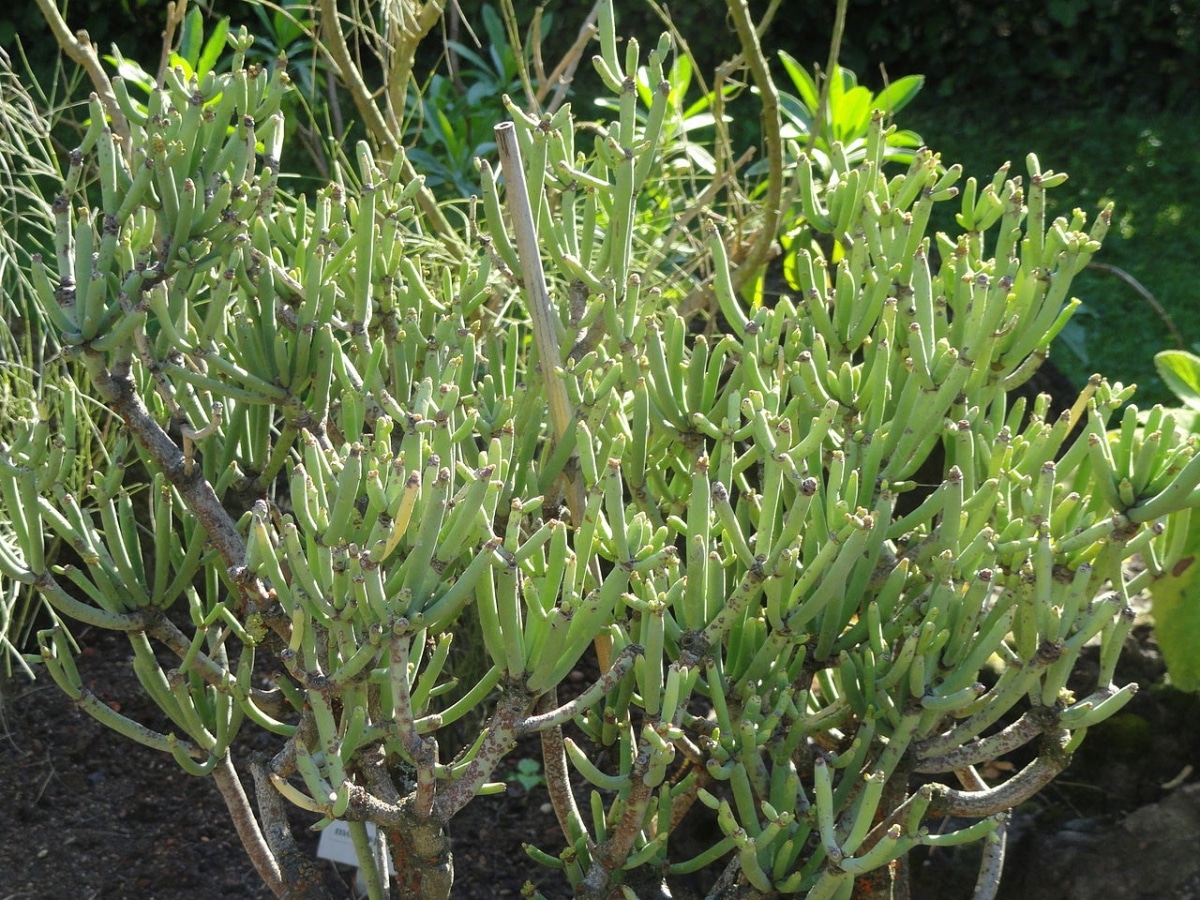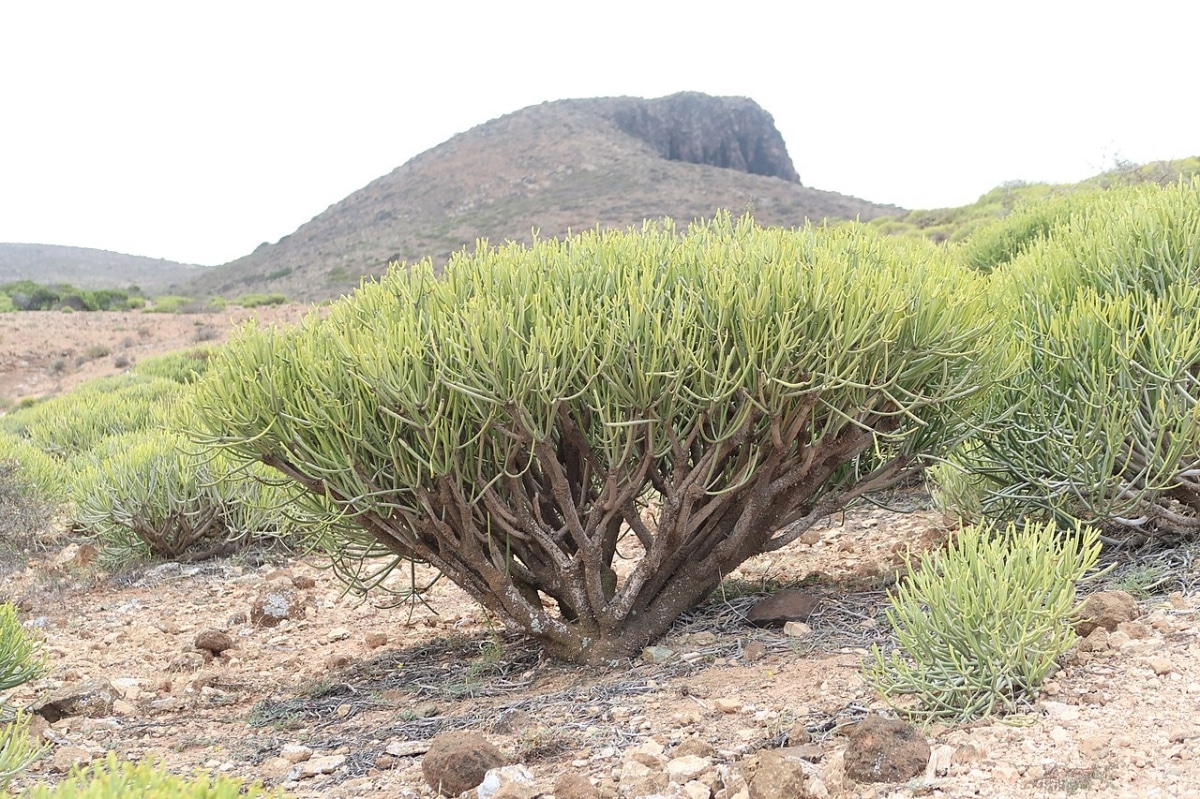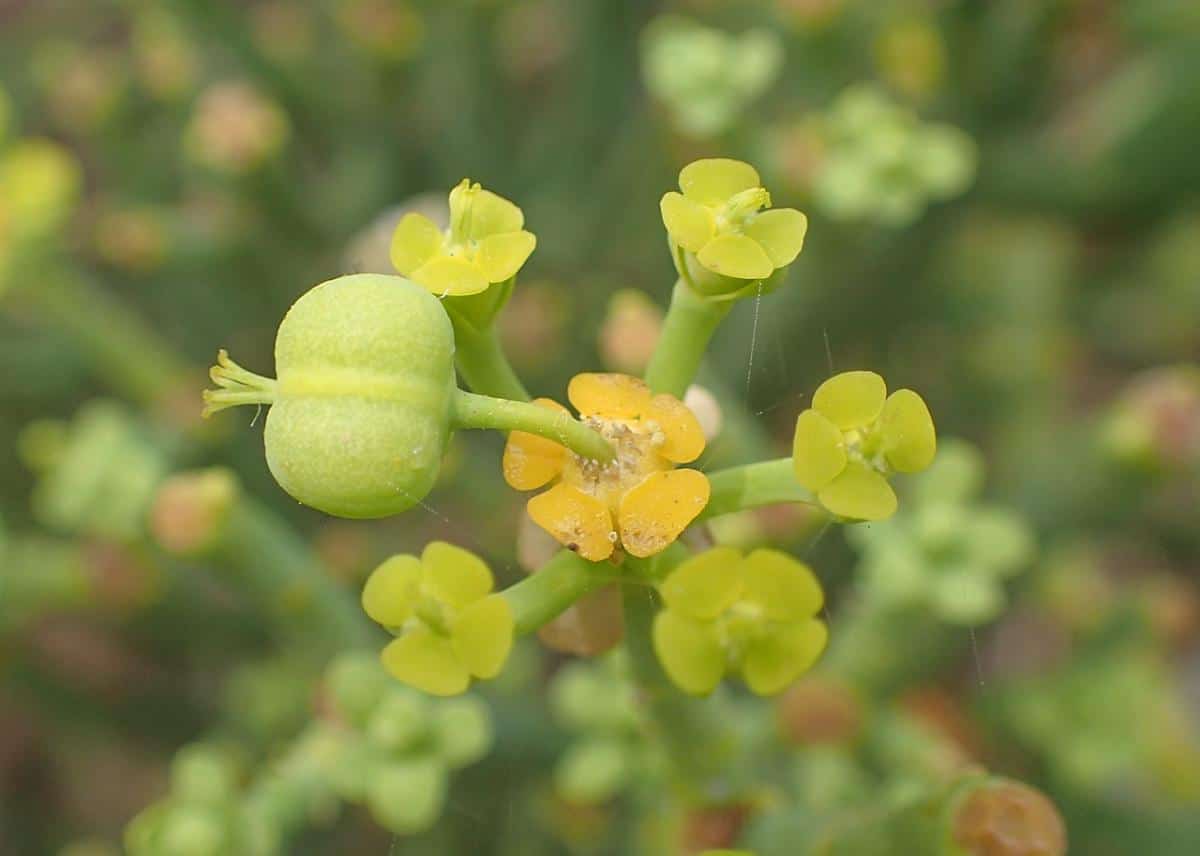
One of the most suitable succulent shrubs to have in a garden that receives little maintenance is the one known as Euphorbia aphylla. It is an endemic species of the Canary Islands, which does not grow very much and, in addition, can live with little water.
The heat does not harm it either, so it is very interesting to grow it in places where the degree of insolation is high or very high. And although it has no leaves, its crown is so branched and compact that it is perfect for planting some succulents underneath that need shade, such as gasterias or haworthias.
What are the characteristics of the Euphorbia aphylla?

Image - Wikimedia / Olo72
This is a shrub that reaches a maximum height of 2,5 meters. As we anticipated, its crown branches a lot and does so from the base, leaving the trunks bare. The upper part is made up of green stems, which are responsible for photosynthesis and, therefore, for transforming the sun's energy into digestible food for it.
The flowers are yellow and very small, about a centimeter in diameter. Those that produce euphorbia are called cyatus, which is an inflorescence whose structure appears to be that of a single flower, but in which there are actually several. It produces seeds, but it is difficult to obtain them since they are small and, in addition, they remain viable for a short time.
It is popularly known as awning. And the species, Euphorbia aphylla, was described in 1809 by the French naturalist Pierre Marie Auguste Broussonet and Carl Ludwig Willdenow, and published in »Enumeratio Plantarum Horti Botanici Berolinensis».
Awning care guide
La Euphorbia aphylla it is an easy plant to care for. It does not need special care to grow well, and in addition, it can withstand drought, so it does not have to be watered frequently. As if that were not enough, it is resistant to the attack of pests and diseases, although of course that does not mean that it cannot have them.
Therefore, we want you to know everything you have to do so that your plant does not have any problems:
Location

Image - Wikimedia / Mike Peel
It is a plant that It must be in a sunny exhibition, and that is why it must be outdoors. As you can see in the images that we show you, the sun shines directly on it. That is what she is used to and that is where we have to have her.
If it were in shade or semi-shade it would not grow well. The branches would bend toward a source of light, lengthening and weakening more and more. To this must be added that the lack of light would make photosynthesis more and more complicated, which is why its stems would lose color and health.
Soil or substrate
- Flower pot: it is advisable to fill it with soil for succulents (for sale here), which is light and allows roots to grow healthy.
- Garden: the soil must be sandy and with a good capacity to drain water; In other words, if puddles form, they filter quickly. It also grows on stony ones.
Irrigation
How often do you water the Euphorbia aphylla? Very few times a month. It is a plant that can live with little waterso you won't have to water it frequently. In fact, an excess of water can be very harmful, since the roots cannot stand being wet for long, much less flooded.
So, to prevent them from rotting, you have to wait for the earth to dry out completely, and only then rehydrate it. That can be once a week in summer, or every 20 days in winter. It will largely depend on the climate in the area where you live. If in doubt, you can use a moisture meter (such as this) which when introduced in the pot will tell you if it is wet or dry.
Subscriber
If you're going to plant it in the ground, it really won't need compost. But If it is going to be in a pot, taking into account that the amount of soil is limited, it is highly recommended to fertilize it. For this, specific fertilizers for succulents will be used (such as this), following the indications that can be read on their packaging. This way we will ensure that the roots do not burn, and that they can make the most of them.
Multiplication

Image - Wikimedia / Krzysztof Ziarnek, Kenraiz
La Euphorbia aphylla it is a bush that multiplies sometimes by seeds, and also by cuttings. The most suitable time is spring, since this way you will have several months ahead in which the weather is warm.
Plagues and diseases
There are no known major pests or diseases. But you have to control the risks so that fungi do not rot their roots.
Rusticity
It is a plant that can be enjoyed outdoors throughout the year as long as the temperature does not drop below -3ºC. If it happens, it will be necessary to protect it inside the house by taking it to a room with a lot of light.
Did you know the Euphorbia aphylla?